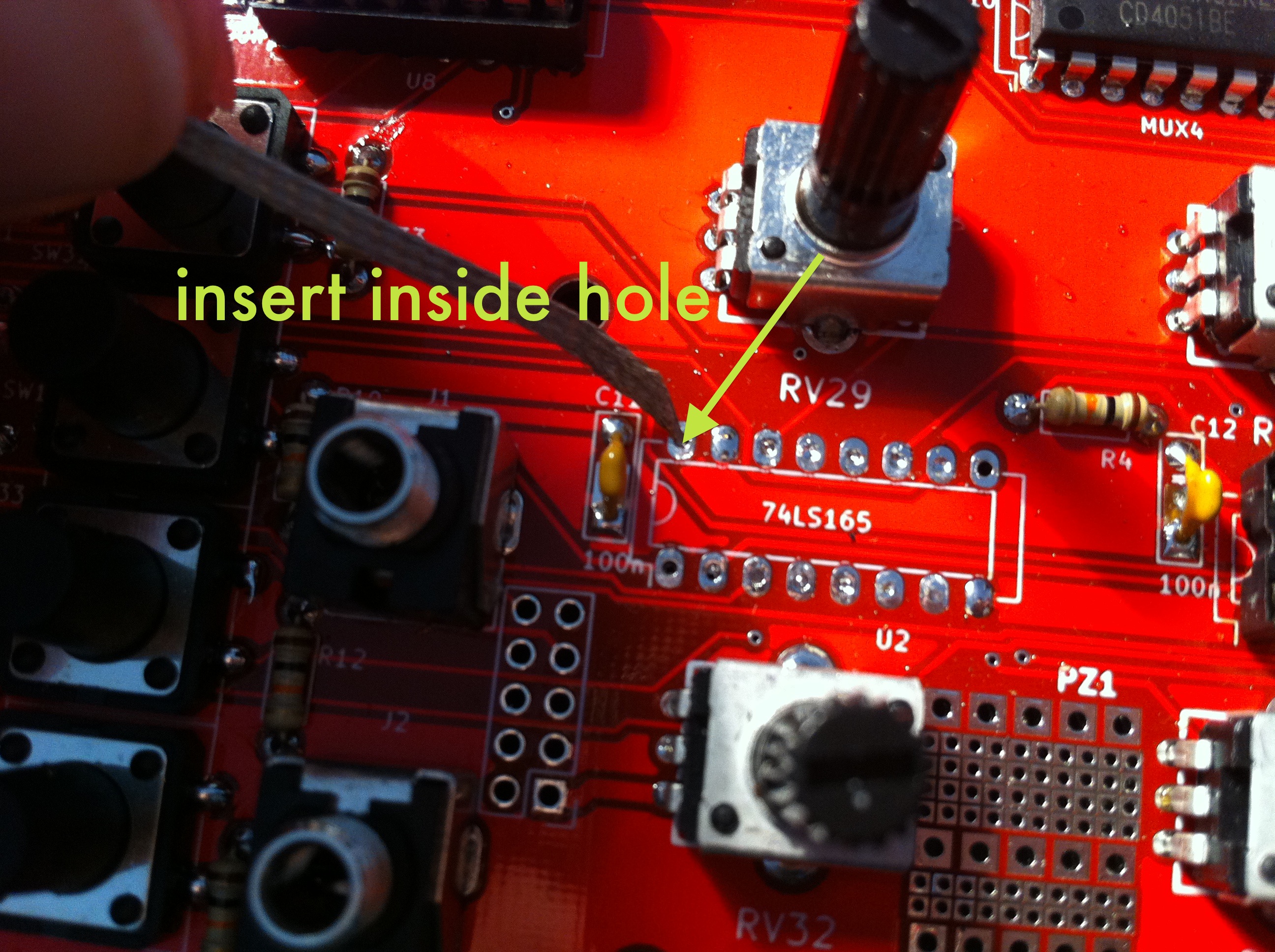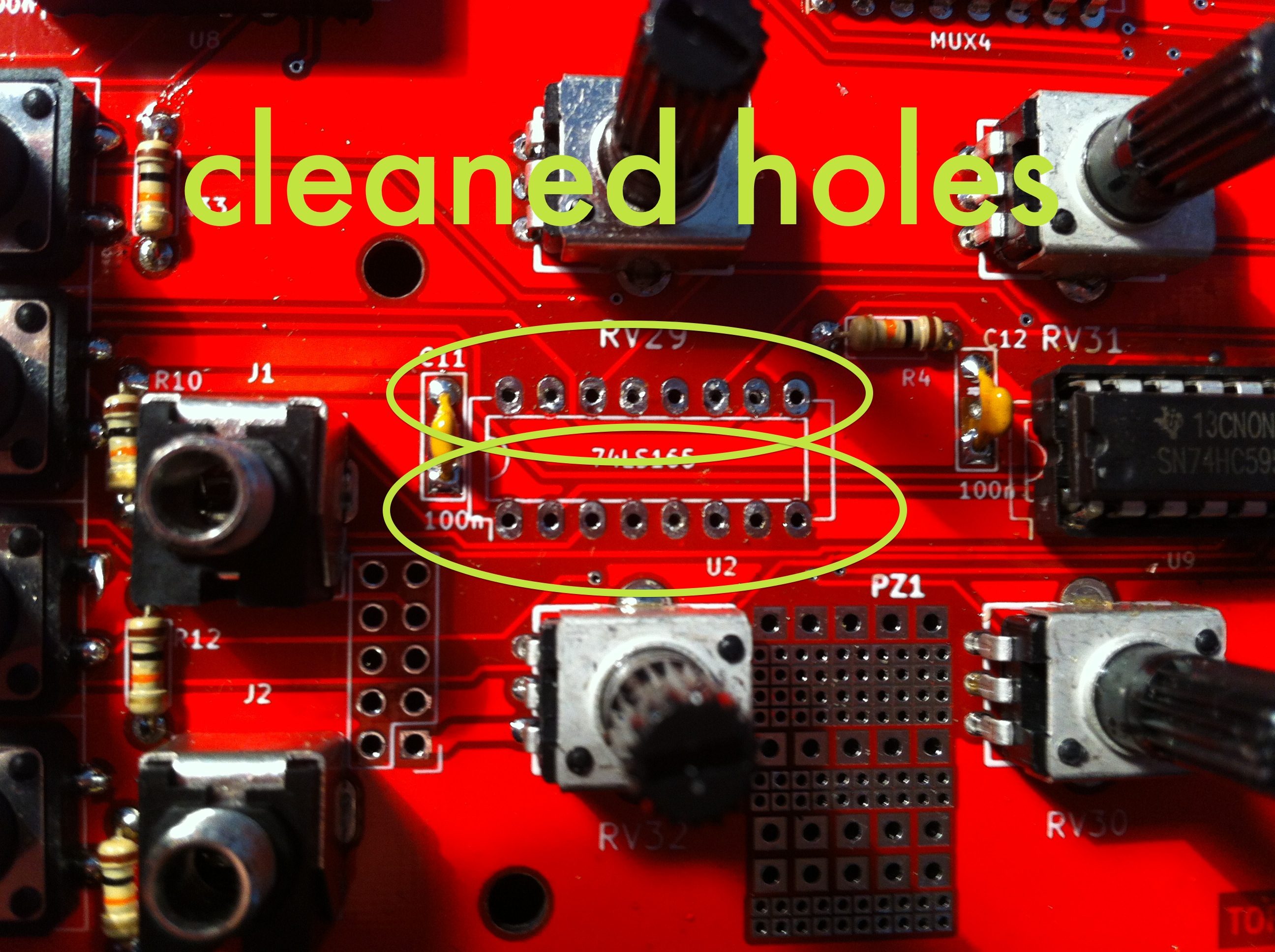
Alpes Machines is very sorry and presents his apologies :
It has been discovered that some 74HC165s from the first batch are randomly defective (certainly a factory bad batch : 44EJ3HKE4) after several hours of use. The sourcing has been changed since. Here is a screen shot :

It’s strongly advised to use DIP16 sockets for those shift registers in order to swap them for new ones when needed, in the future, or to change them now for brand new ones.
Mouser’s part : 595-CD74HC165E
They are easily available worldwide in electronic components stores or on the internet (#74HC165 ) for a few bucks (or you can ask us some samples).
The serial out shift registers 74HC165 are used to “decode” the buttons press. So if you discover that the buttons are not working correctly, it is certainly the fault of ‘165s.
./..
But now that you’ve discovered that the shift registers are faulty, what to do ? Well, you need to remove them. We will sacrifice them and replace them for a DIP16 socket + brand new 74HC165. Ideally you would remove them with a desoldering station.

If you don’t have a desoldering station, there is an efficient process :
- Remove as much as possible the solder
- Cut the legs to remove the body of the shift register
- Remove the leg of each hole
- Clean the holes













